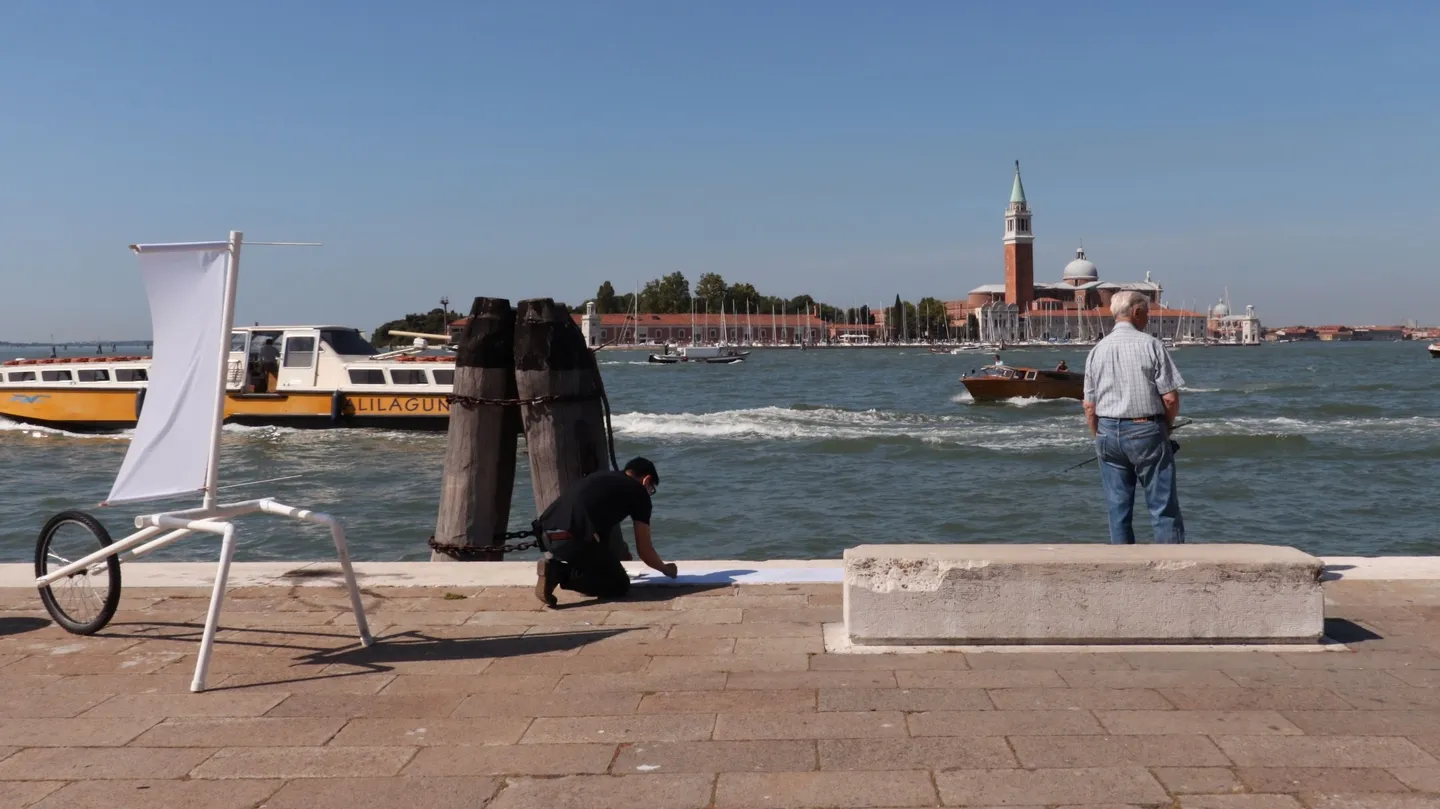
Path. 8, Invisible Cities 。 云海游
About artwork
Provenance
Tech info
About
Referencing Boedi’s diasporic experience, Path. 8, Invisible Cities 。云海游 is a contemplation—through movement and mark-making—of imaginary homelands and their interiorities. The first part of the title is drawn from Italo Calvino’s book of the same name, where Venetian Marco Polo told to Kublai Khan tales of fantastical cities. The Chinese characters 云海游 may be understood in multiple meanings, including: “cloud sea flowing” and “to speak of maritime travels”. Boedi walked through Venetian streets pushing a sail carriage*. The impulse for the sail carriage came from migratory movement of the diasporic Chinese through South China Sea, and foreign land. The sail carriage referenced sail carriages that were first seen by 16th century European travelers to China in the Ming Dynasty, the same period as Zheng He’s naval expeditions to Southeast Asia and other parts of the world. As he explored Venice, Boedi documented textures of the city onto the sail fabric—collecting frottage specimens of spaces that bordered between water and land—wells, edges of canals and the promenade—to underscore the conjoined spectral and visceral imaginations to a place, of perceiving the environment through the conflated subjectivities of personal, cultural, historical and political time-spaces. Boedi's performance was part of the 57th Venice Biennale, International Curators Forum Diaspora Pavilion public program Map1: Waterways curated by Something Human. The project was supported by the Singapore International Foundation and Canon. Documentation video by Audrey Koh.




















